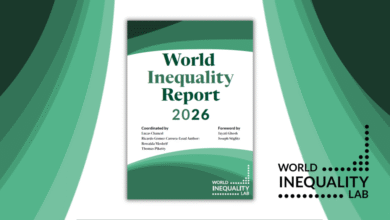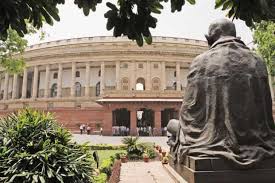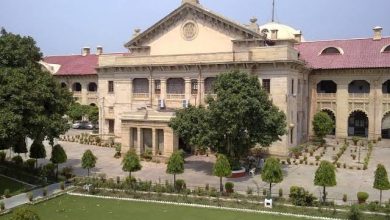Experts Pinpoint Challenges ahead of Budget
Will the budget take care of the agrarian distress or the plight of the farmers on the expected lines?
We always debate about the nature, content and intention of the government and aspiration of the people before any budget but we hardly think over its implementation on the ground and its feasibility for which the allocation that would be earmarked in the budget. Will this budget will be different for the farmers this time?
Keeping in mind assembly elections there is little doubt that it may not be a political budget. Tax relief can be a welcome sign for some along with some other measures but the big question is: Will the budget take care of the agrarian distress or the plight of the farmers on the expected lines?
There are many more questions that may require explanation after the budget: Has the budget taken note of the remedial measures required after demonetisation and implementation of GST and the pandemic? Has the budget taken care of internal and external challenges? Will the present economic indicators match with the aspiration of the budgetary allocation? How is this budget going to impact our economy and well being of the people in the short and long term? Is the content of the budget in the line of the mood of the nation? However expectations from experts from the budget on economy, health and education are as under.
According to Dr Amirullah Khan, development economist and Ex-advisor to Bill and Melinda Gates Foundation, “There is one big expectation from the budget, and that is in terms of a policy direction. The government over the last few years has given out a mixed and confusing set of signals. The confusion started very early.
Firstly, the Government that came to power promising an end to subsidies and doles, proceeded to increase outlays to NREGA like never before, increased fertilizer subsidy and announced PM Kisan among other such populist measures.
Secondly instead of reducing taxes as promised, it brought in a huge GST burden and cut corporate taxes only for large companies with turnovers above Rs 500 crores.
Thirdly, while it did keep inflation low as promised in the first term, the second term has seen prices shoot up all around, lead by an unprecedented hike in petrol and diesel prices.
Fourthly, a MAKE IN INDIA promise has fizzled out with imports rising consistently and exports coming down quarter after quarter. This is even after the rupee has been brought down to its lowest ever. Finally, does the government, that promised crores of jobs, even worry about the record high unemployment rates? In this budget, we expect some clarity as were build a battered economy. Will our economic policy be growth oriented? Or will we fight poverty first? Do we want to create more jobs, or do we want more small entrepreneurs? Do want an Atmanirbhar Bharat or will we continue increasing our imports from China, like we are doing for the last so many years now?
The expectations of Dr. Wasim Ghori, Brand Ambassador – DiaBeaters, India from the budget on health sectors are: Non-communicable diseases (NCDs) currently account for a dominant share of morbidity and mortality in India and is projected to account for an estimated 75% of the total mortality by 2030. Cardiovascular diseases, cancer, respiratory diseases, obesity and diabetes are the country’s leading causes of death.
Taken as a whole, NCDs have a sizeable economic effect at the household, local and national levels. This disease burden impedes economic growth by reducing labour supply, decreasing productivity and income, diminishing savings and investment as a result of both reduced earnings and higher medical expenditure. As per a study, it is estimated that in the years leading to 2030, NCDs will result in macroeconomic costs that total $3,158 per capita, equivalent to a 7% annual tax on the country’s gross domestic product. The country needs a healthy and fit population to become a world giant. Even though, India has the youngest workforce, the dropping fertility rates and increasing lifespan are going to have a huge surge in healthcare expenses in the coming decades.
An important way to control NCDs is to focus on reducing the risk factors that are associated with the diseases. While in the last decade, India has introduced a few low-cost solutions to prevent and control NCDs in India viz., The National Programme on Prevention and Control of Cancer, Diabetes, CVD and Stroke (NPCDCS) to address the rising burden of NCDs and the Ayushman Bharat Programme on improving the delivery of primary healthcare, a lot more focus needs to be brought back for NCDs care and management among the population of the country. There is a need to monitor progress and the trends of NCDs along with their risks. This is an important step for guiding policy and priorities.
Genome Mapping is the need of the hour and it will lead to the reduction in lifestyle diseases. It will make Indians more aware about their physical makeup, thus helping them in making informed lifestyle choices. This will eventually result in the reduction of future medical bills and physical distress. It is imperative for the government to promote public-private partnerships for Genome Mapping projects. Currently, due to less infrastructures and the presence of low number of labs, the cost of genome mapping is very high. Only few elite people can avail the facilities. Government of India, need to give subsidies so that the personalized genetic report is available to everyone. The financial budget 2022-23 should allocate funds for the development of resources that enable monitoring of the genomic – related health status of populations. This will provide the much-needed data to discover cures for complex health conditions.
The expectations of Prof M. Aslam, Ex- Vice Chancellor of IGNOU are: Education in Budget, said, “Education is one important Sector which suffered a lot during pandemic. It has not been receiving adequate attention in recent budgets. Last two years have already seen a cumulative 15 per cent decrease in the education budget. We are looking for increased support for education sector through the Union Budget 2022.
MUST READ :
We observe that online education which was adopted as a forced alternative is now becoming the compulsive preferred mode of education and is expected to continue as long as students are not able to return to classroom teaching as before. Due to the lack of technological infrastructure in schools and teachers who are underprepared, for a large section of our population particularly in rural areas, where just one out of every four children has access to internet and digital assets, switch from traditional to online education has been seriously constrained. My expectations are as under:
While as there is a need to support access to technology, to ensure last-mile effective and dedicated connectivity and required infrastructure, it should not be unconditional. It is necessary that the education technology (Ed-Tech) companies are made to operate under strict guidelines, so that learning outcomes are not compromised.
It is also important that Open and distance learning institutions are supported with adequate allocations so that they can be extensively used to develop multi-mode educational interventions to help educational institutions to bridge the gap between online and classroom teaching; The budget should also provide enough scope for skill education, which has great potential for employment.





